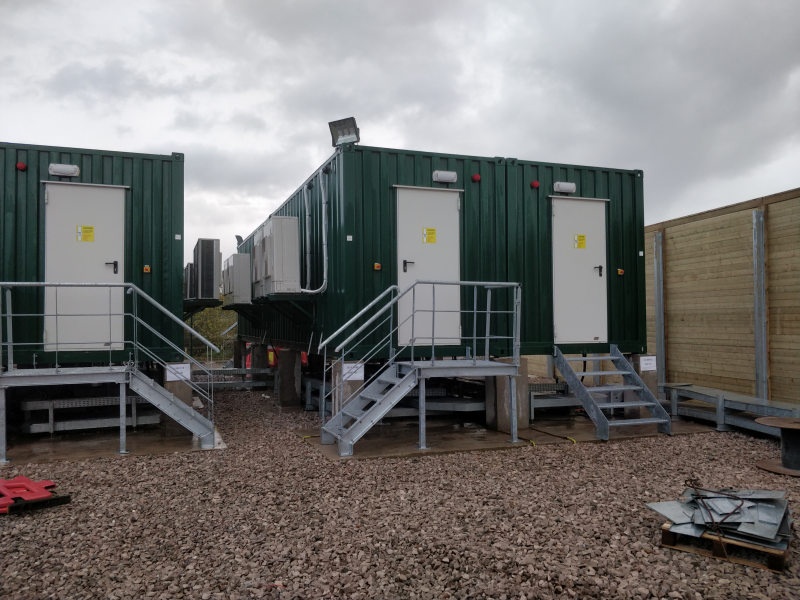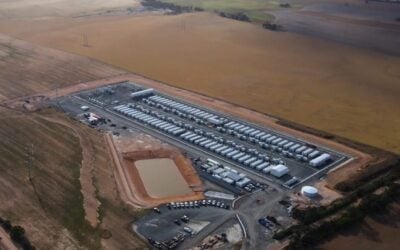
UK-based Gresham House Energy Storage Fund has had an active month, ringing in 2020 with a slew of asset acquisitions and optimisation deals.
Gresham House is one of two energy storage funds to be listed on the London Stock Exchange, having floated the fund in November 2018.
Enjoy 12 months of exclusive analysis
- Regular insight and analysis of the industry’s biggest developments
- In-depth interviews with the industry’s leading figures
- Annual digital subscription to the PV Tech Power journal
- Discounts on Solar Media’s portfolio of events, in-person and virtual
Or continue reading this article for free
Gresham specialises in utility-scale lithium-ion battery energy storage, as well as developing ground-mounted solar projects through Gresham House New Energy and managing around 200MW of solar and wind through Gresham House Asset Management.
Kicking off December with two acquisitions from VLC Energy, Gresham paid out £29.2 million ($38.3 million) for the 40MW and 10MW duo.
The batteries were originally developed by VLC Energy, a joint venture between Low Carbon and BPI Immingham, a subsidiary of Vitol Group.
The sites, which are some of the biggest grid storage facilities in the UK, are both operating on Enhanced Frequency Response (EFR) contracts out to January 2022, awarded by National Grid in its 2016 EFR auction.
The batteries also have 15-year Capacity Market contracts, with the 40MW Glassenbury site also having significant potential to offer Reactive Power revenue earning services.
Gresham's second announcement and third acquisition in the space of a month was the 49MW battery known as Red Scar.
The £32.8 million acquisition from Noriker Power and Gresham House DevCo has now been completed, with the battery set to generate its revenue from asset optimisation through the wholesale market as well as the UK’s Balancing Mechanism.
The fund has had its eye on the project for a year, outlining it as one of its portfolio projects in its initial public offering (IPO) prospectus in October 2018, and confirming the project was still on its radar in August when it took a 5% stake in Noriker Power.
Gresham is also expecting to acquire a further three projects in the coming months, namely two 50MW projects and a 5MW extension to the pre-existing Littlebrook site.
The acquisitions, which are set to take place once the sites have been commissioned and become operational, will take Gresham’s operational portfolio to 279MW.
Alongside asset acquisitions, Gresham House this week unveiled a new partnership with UK company Flexitricity for the optimisation of 20MW of its portfolio.
Flexitricty is to optimise the Noriker Staunch project, a mixture of gas generators and lithium-ion battery storage based in Gloucester.
The site is to be optimised across frequency response services and be traded in the day ahead and intraday energy markets, as well as being available to National Grid in the Balancing Mechanism.
“Flexible generation assets – and battery-led projects in particular – are crucial, enabling the deployment of significant incremental amounts of renewable energy projects and energy storage also offers investors an attractive new asset class as the UK transitions to a cleaner, more sustainable system,” Ben Guest, portfolio manager of Gresham House Energy Storage Fund, said of the partnership.
Flexitricity isn’t Gresham’s only optimisation partner, however. In October, Gresham House New Energy sealed the deal with KiWi Power for the optimisation of its 15MW Lockleaze battery against multiple revenue streams, including ancillary services and participating in the Balancing Mechanism.
Gresham House has also partnered EDF and Upside previously for the optimisation of a 20MW storage project.
It launched a new share placing in October for the purpose of funding its new and existing pipelines, raising £41.6 million of the £58 million it originally outlined. The placing was the second in six months, having aimed to raise £75 million back in April.
The UK's only other Stock Exchange-listed, dedicated energy storage investment fund, Gore Street Capital, invests solely in front-of-meter grid storage. Gore Street has also acquired projects in late 2019, reaching an operational portfolio of 19MW in October, while also securing a funding commitment from a sovereign wealth fund in Ireland for 60MW of battery storage split across two 30MW projects.
You can still download: 'A Guide | Increasing the value of power: Delivering 50MW of battery storage in the UK', Energy-Storage.news' sponsored report on the 50MW combined Glassenbury and Cleator projects, commissioned by system integrator NEC.





